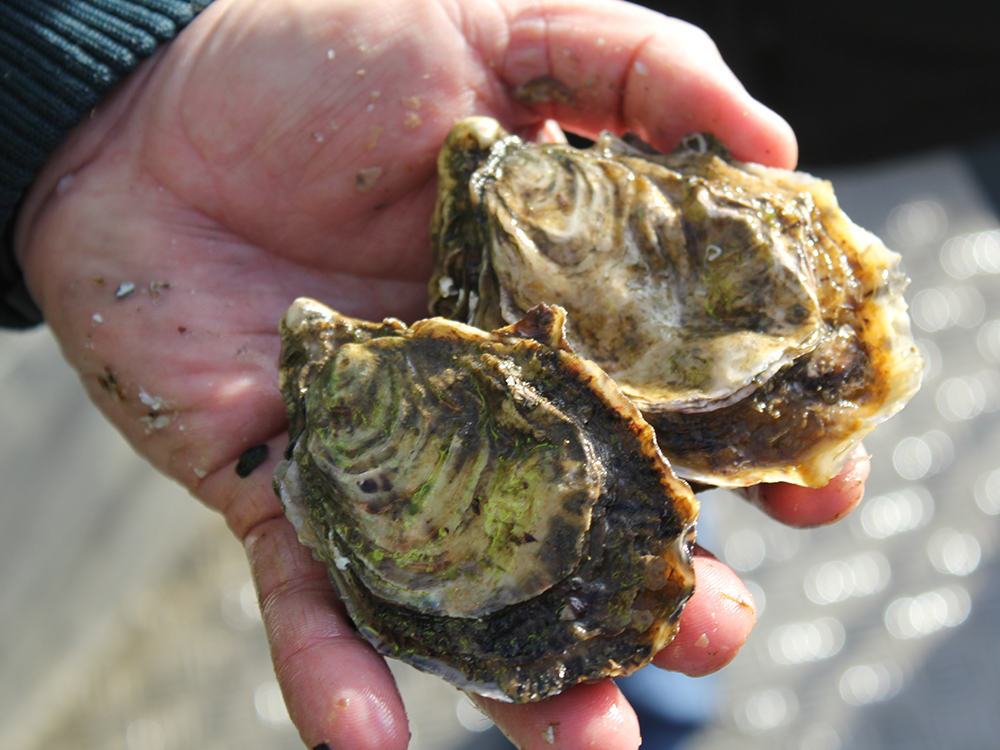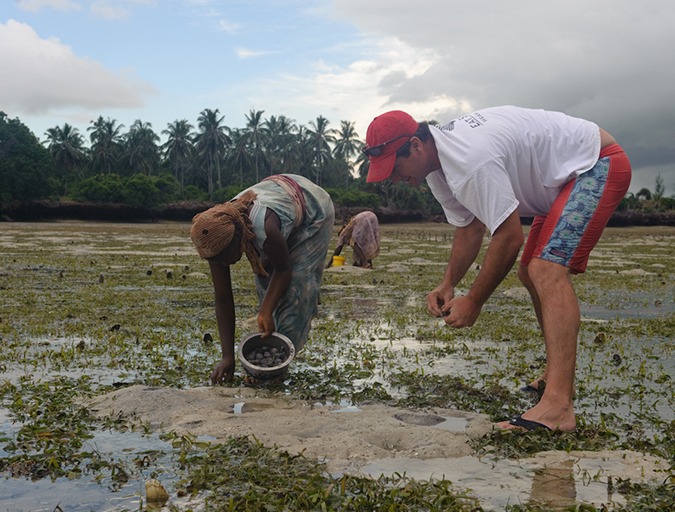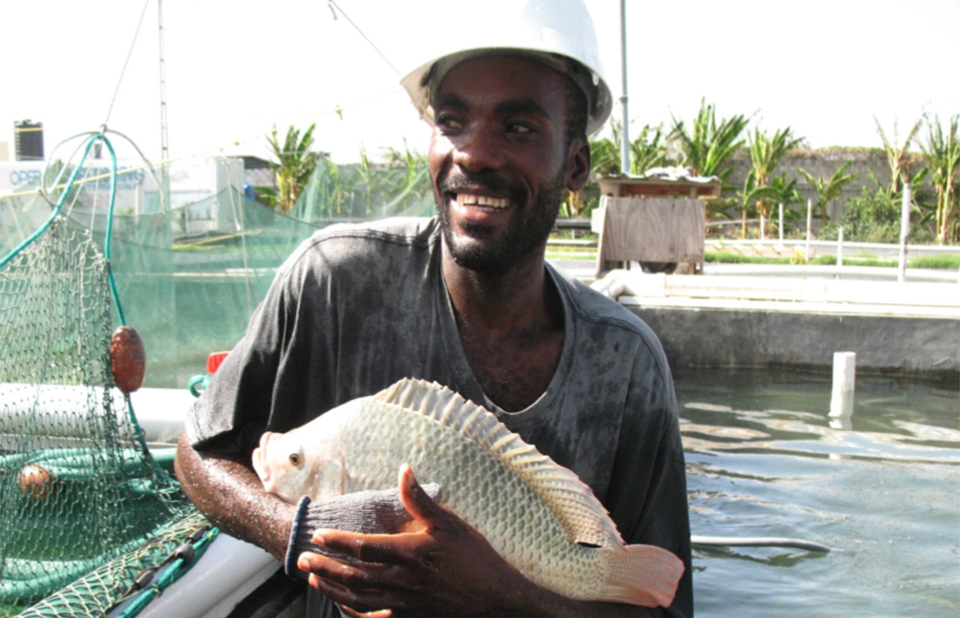Experts agree that aquatic proteins deserve a bigger share of the plate

The “blue economy,” or the sustainable use of ocean resources for economic growth, reminds us that we thrive – or we suffer – together. Every second breath we take comes from the ocean, and all our waters sustain us in ways that deserve greater appreciation.
In this context, “blue food” gets a deserved share of the spotlight for its contributions to food security, nutrition and livelihoods. Blue food is defined as all edible aquatic organisms, including fish, shellfish and algae from marine and freshwater production systems (aquaculture and fisheries).
The known benefits of blue food have broadened lately, attracting more of the spotlight. Recent reports have shown that shifting from land-based proteins to aquatic proteins should be a part of climate change solutions, within boundaries that protect the health of the ocean and freshwater systems. Global food systems transformation is key for mitigating climate impacts, and there is a palpable urgency to the conversations about blue food’s role in food systems transformation, with increased momentum and pace toward some specific goals.
Global food systems transformation
Transforming our food systems is essential for sustainably nourishing a planet of nearly 10 billion people by 2050. During the Virtual Ocean Dialogues (VOD), hosted by the World Economic Forum and Friends of Ocean Action, several key experts spoke about blue food developments within food systems transformation.
“Although there have been many assessments of the global food system and priorities for the future, there is a recognition that they tend to give short shrift to the role of aquatic foods in meeting the challenges that lie ahead,” said Jim Leape, co-director of the Stanford Center for Ocean Solutions and a member of the Blue Food Assessment (BFA) Core Team. “The Blue Food Assessment is an idea that emerged from that recognition.”
The BFA Team is addressing knowledge gaps on a tight timeline. A major international effort, the BFA is producing an important scientific assessment that will underpin discussions at the United Nations’(UN) first Global Food Systems Summit in 2021, as well as other high-profile global events and food forums. Their synthesis report of the core papers will summarize key findings for decision-makers. Core papers are focused on eight topics, and the goal is to have them all published in peer-reviewed scientific journals before the 2021 Global Food Systems Summit.
“This is a singular opportunity to bring aquatic foods into the center of global food dialogues. There are action tracks now being set in motion to prepare the Summit,” said Leape. “This is about pulling together the science, it’s about filling in the gaps in our understanding of the aquatic food system, and it’s also very much about informing and accelerating the changes that need to happen, the policies and practices that need to be adopted if we are going to succeed in making good use of the ocean.”
https://www.aquaculturealliance.org/advocate/a-wider-view-consensus-on-seafoods-planetary-and-human-health-benefits/
In parallel with the development of the Blue Food Assessment, Stanford, Stockholm Resilience Centre, and EAT are working with Friends of Ocean Action, World Economic Forum, World Resources Institute and the Food and Agriculture Organization of the United Nations (FAO) to develop a Blue Food Coalition. The Coalition will champion the BFA at the UN Global Food Systems Summit and elsewhere, as well as mobilize sectoral action on key BFA recommendations.
Dr. Roz Naylor, co-chair of the Blue Food Assessment Team and founding director of the Center on Food Security and the Environment at Stanford University, was asked during the VOD how we can make the best decisions about using our aquatic resources for food: “There is an incredible diversity of species (both caught and farmed), infrastructures, and scale…and we have marine and freshwater…so, we need to build on the diversity we have in our aquatic food system.”
Combined with its ability to provide vital nutrition to the developing world and others that a plant-based diet cannot, blue food is uniquely positioned at the table.
That diversity is also a critical consideration in the discussions about environmental impact and nourishing billions of people. As Leape also pointed out, nutritional value varies across species, as does the environmental impact of production (in both fisheries and aquaculture).
“Aquatic foods must occupy a central place in our food future and the global agricultural research agenda,” said Dr. Gareth Johnstone, director general of WorldFish, during the VOD. “We need to mobilize a global movement where the research community, policy makers, donors, investors, business leaders, local producers, processors, traders and consumers come together to co-design interventions that make aquatic foods an integral part of the food systems transformation agenda.”
Shifting diets for sustainability and climate
One aspect of food systems transformation – climate change mitigation – can attract certain segments of the global population to blue food’s climate advantage. Youth, in particular, are seen leading on climate action globally.
Giles Bolton, responsible sourcing director at Tesco and another expert speaker at the VOD, said, “In developed markets like the UK, you see a lot of younger people moving away from more traditional diets, and seafood has a huge opportunity to be sustainable and desirable. The market potential there is enormous.” Bolton emphasized that continued and increased attention to sustainability and responsibility are key to making seafood desirable to younger people.
A January 2020 YouGov survey shows that one in five U.S. millennials has changed their diet to reduce their climate footprint. They are more likely than Gen Xers or Baby Boomers to do so; however, a February 2020 research report by the Yale Program on Climate Change Communication and Earth Day Network revealed the dire need for reaching more Americans with the food and climate message. More than half (51 percent) of Americans said they would eat more plant-based foods if they better understood the environmental impacts of their food choices. Four in 10 Americans said they hear about the impact of food choices on global warming in the media “once a year or less often” (11 percent) or “never” (29 percent). The authors found that there is a huge need for the environmental impact of food to be discussed more widely in America.
Blue food has many attributes that can drive positive outcomes in food systems transformation, including its important climate advantage and the resulting benefit to the climate-challenged ocean when all is done within sustainable boundaries. The blue food sector has been striving to unify the wild and farmed communities, building networks and embracing pre-competitive collaboration to lift the performance of the whole sector. Low climate impact is a message everyone can get behind, while also pinpointing where improvements can be made and demonstrating that individual business actions toward the winning climate outcome are maximized. Combined with its ability to provide vital nutrition to the developing world and others that a plant-based diet cannot, blue food is uniquely positioned at the table.
The next generation deserves to inherit a healthy planet, and they are demanding action. It’s blue food’s time to answer the call.
Follow the Advocate on Twitter @GAA_Advocate
Now that you've reached the end of the article ...
… please consider supporting GSA’s mission to advance responsible seafood practices through education, advocacy and third-party assurances. The Advocate aims to document the evolution of responsible seafood practices and share the expansive knowledge of our vast network of contributors.
By becoming a Global Seafood Alliance member, you’re ensuring that all of the pre-competitive work we do through member benefits, resources and events can continue. Individual membership costs just $50 a year.
Not a GSA member? Join us.
Author
-

Laura Rose
Laura Rose is an independent consultant with a background in marine conservation, aquaculture, and international development. She is based in Washington, D.C. Follow her on Twitter @fish4good.
[109,111,99,46,108,105,97,109,103,64,55,55,55,46,101,115,111,114,46,97,114,117,97,108]
Related Posts

Responsibility
A wider view: Consensus on seafood’s planetary and human health benefits
Several recent reports echo the message that eating sustainable seafood can help save the planet while making significant gains in public health.

Intelligence
Behold the nutritious oyster
Oysters provide important, natural filtration of water and are an important component of many healthy coastal ecosystems because their active filtering can help improve and maintain water quality. For many coastal communities, oysters are an important food resource and excellent sources of protein and amino acids, zinc, selenium, iron and B-vitamins.

Responsibility
Social oysters: Aquaculture inspiring communities
Two New England shellfish producers are furthering their innovative social license initiatives, both in their hometowns and in food-insecure regions overseas. Island Creek Oysters and Matunuck Oyster Farm have become admirable aquaculture ambassadors.

Responsibility
Haiti’s hatchery of hope
Built on a dream of feeding some of the world’s poorest and most vulnerable people, a charity-built tilapia hatchery in Haiti now learns to stand on its own.


